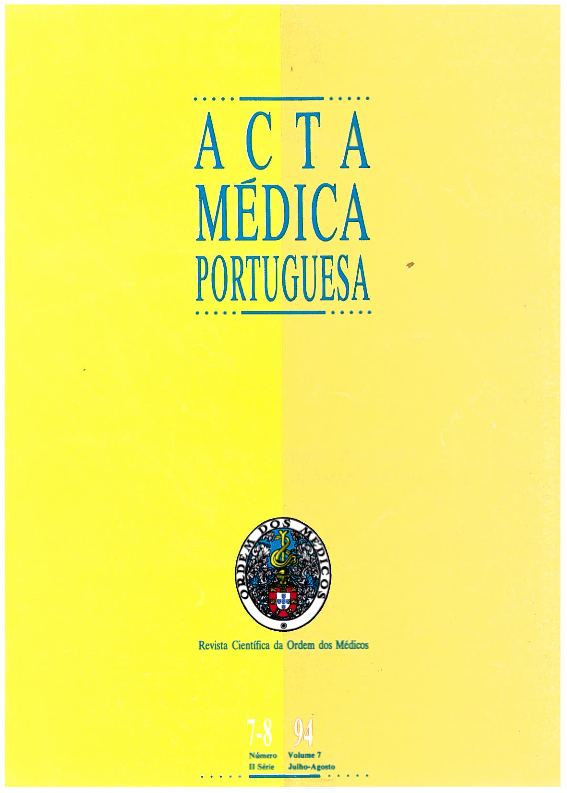Neural tube defects. The 10-year experience of a central maternity hospital.
DOI:
https://doi.org/10.20344/amp.2941Abstract
1) To determine trends in prevalence of neural tube defects and the impact of therapeutic abortion. 2) To review perinatal management of spina bifida.All spontaneous and therapeutic abortions, still births and live births affected by neural tube defects registered in Alfredo da Costa Maternity in Lisbon, from 1983 to 1992, were retrospectively analysed.Eighty-two cases with neural tube defects are reported and myelomeningocele and anencephaly++ were the most frequent ones. Total prevalence for all defects was 0.78:1000 births with a small upward trend during the last two years. Birth prevalence was 0.6:1000, with a clear downward trend, due to therapeutic abortion. Prenatal diagnosis improved significantly, from 9% of all defects detected in 1983-87 to 77.5% in 1988-92. Since 1989, all cases of anencephaly were detected before birth. Most cases of spina bifida were vaginally delivered, and elective cesarean section occurred in 4. Early closure of the defect was undertaken in 87.6% of the newborns with open spina bifida.While total prevalence of neural tube defects remained stable, with only a small upward trend, prenatal diagnosis and therapeutic abortion resulted in a 56.3% fall in birth prevalence. Optimal management of open spina bifida demands a multidisciplinary team with an individual program for each case.Downloads
Downloads
How to Cite
Issue
Section
License
All the articles published in the AMP are open access and comply with the requirements of funding agencies or academic institutions. The AMP is governed by the terms of the Creative Commons ‘Attribution – Non-Commercial Use - (CC-BY-NC)’ license, regarding the use by third parties.
It is the author’s responsibility to obtain approval for the reproduction of figures, tables, etc. from other publications.
Upon acceptance of an article for publication, the authors will be asked to complete the ICMJE “Copyright Liability and Copyright Sharing Statement “(http://www.actamedicaportuguesa.com/info/AMP-NormasPublicacao.pdf) and the “Declaration of Potential Conflicts of Interest” (http:// www.icmje.org/conflicts-of-interest). An e-mail will be sent to the corresponding author to acknowledge receipt of the manuscript.
After publication, the authors are authorised to make their articles available in repositories of their institutions of origin, as long as they always mention where they were published and according to the Creative Commons license.









